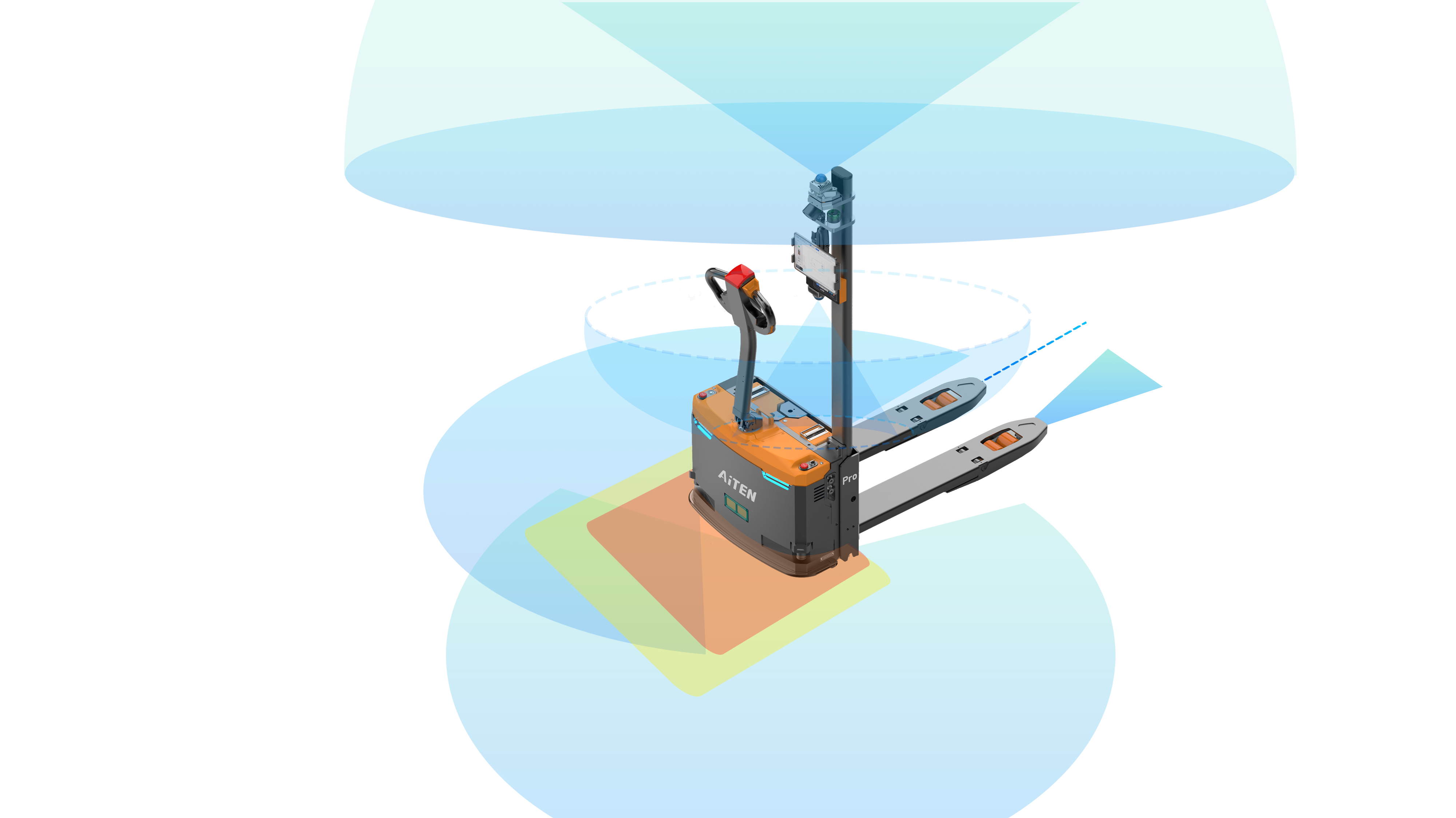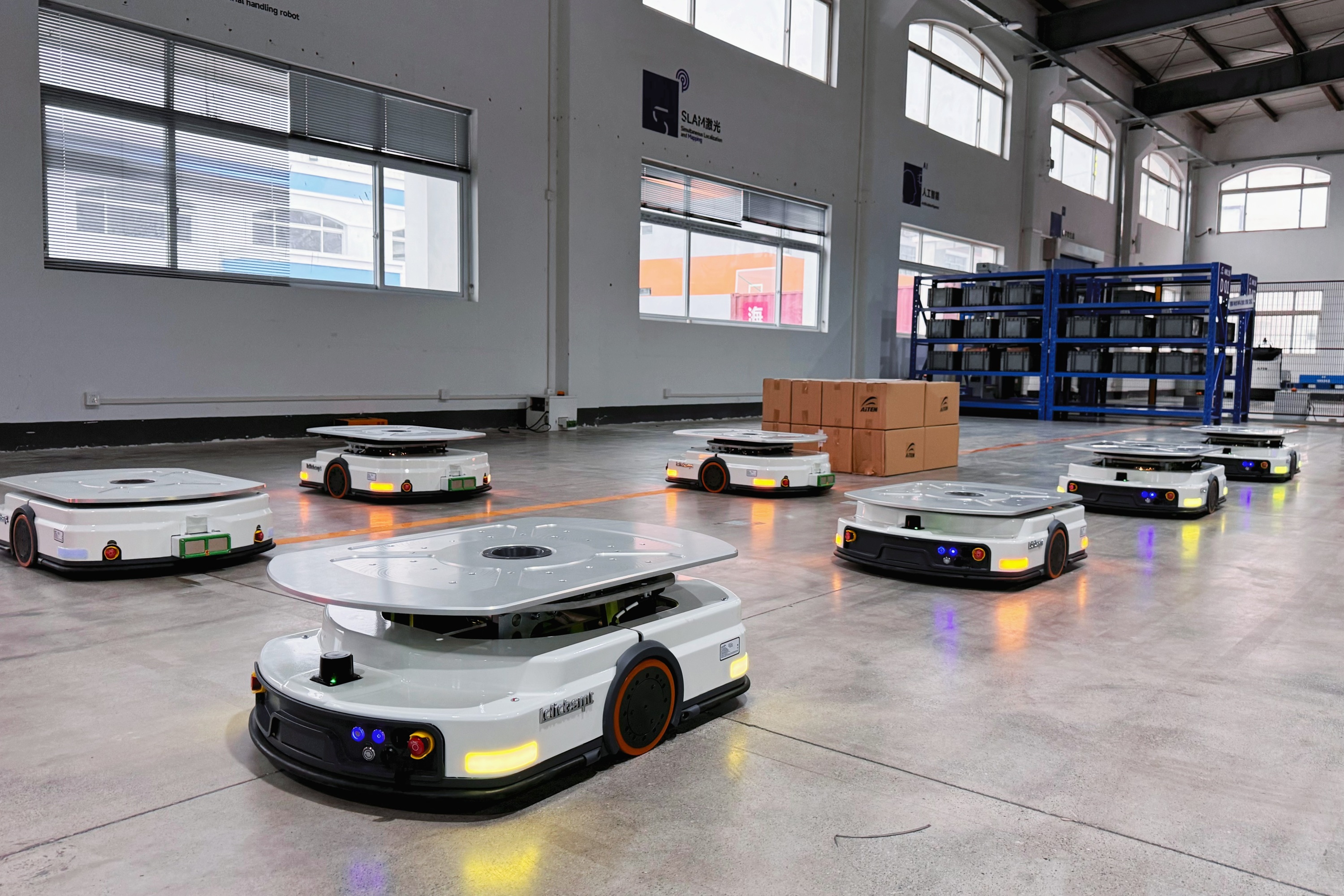How Unmanned Forklifts Are Transforming Warehouse Management?

In today's warehousing and logistics industry, warehouse automation has become a key factor in improving efficiency and reducing costs.AGV unmanned forklift (Automated Guided Forklift), as an important part of the warehouse automation solution, is changing the traditional way of material handling. Unmanned forklift trucks are widely used in warehouse management as the key logistics and warehouse automation equipment. What scenarios are unmanned forklifts suitable for?
Application Scenarios
1. Inbound Handling
When the goods arrive at the warehouse, the unmanned forklift can automatically identify the information of the goods pallet or shelf, accurately fork the goods, and carry the goods to the designated inbound storage area according to the preset routes to achieve efficient and accurate inbound operation, and to reduce the time and manpower cost of manual handling.
2. Intra-warehouse Handling
Inside the warehouse, unmanned forklift trucks can handle goods autonomously between different shelving areas, picking areas, and processing areas according to system commands. They can flexibly shuttle through narrow aisles, accurately complete the task of picking and placing goods, and improve the utilisation of warehouse space and cargo handling efficiency.
3. Outbound Handling
After receiving the outbound instruction, the unmanned forklift goes to the designated storage location quickly, forks the goods to be outbound, carries them to the outbound platform or loading area, docking with the transport vehicle, completing the outbound loading and unloading operation of the goods to ensure the timely and accurate shipment of the goods.

Applications
1. Multi-level Stacking
In some food processing and manufacturing enterprises, unmanned forklift trucks are used to stack goods on multiple levels to improve the storage density of the warehouse. For example, using AiTEN AE and AR series unmanned forklift trucks can stack cargoes in multiple layers, and the repeatable loading accuracy is as high as ±10mm, which maintains the standardised, neat and uniform stacking of goods on the floor.

2. Planar Handling
unmanned forklifts can operate accurately in smaller spaces. Their automatic navigation system can carry out path planning according to the warehouse shelves, ensuring that the warehouse space can be fully utilised. This helps to reduce the footprint of the stock area and increase the storage density of the warehouse.

3. Shelf Access
Handling from shelves to designated areas or from designated areas to shelves. By automating these handling tasks, manual operations are reduced and efficiency is increased.

Integration With Other Systems
1. Integration With WMS
The unmanned forklift can seamlessly interface with WMS to receive task instructions from WMS, such as cargo handling, storage, inventory, etc., and provide real-time feedback to WMS on the execution of the operation, thus realising automation and informatisation of warehouse management.
2. Integration With MES
In production warehouses, unmanned forklift trucks can also be integrated with the Manufacturing Execution System (MES) to deliver raw materials and parts to production lines in time according to the production plan and schedule to ensure the continuity and efficiency of production.
Conclusion
Unmanned forklifts are gradually becoming an important tool in modern warehousing and logistics management by improving warehouse operation efficiency, optimising space utilisation, reducing labour costs and enhancing safety. With the continuous progress of technology, they will be more widely used and become a key component of intelligent logistics and digital warehousing.
If you have any additional questions or would like to learn more about AiTEN’s selection of robots, please contact us to set up an appointment with an AiTEN Robotics automation expert.
















.webp)







.webp)
.jpg)















